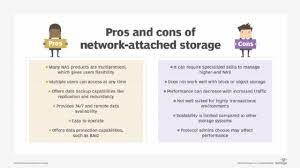Introduction
In today's digital world, Network-Attached Storage (NAS) devices have become increasingly popular for storing and managing data. However, just like any other storage solution, NAS devices are susceptible to failures, accidents, and data loss. That's why implementing a reliable backup strategy is crucial to ensure the safety and recoverability of your data. In this expert blog post, we will explore five NAS backup techniques, discussing their pros and cons in detail. By understanding these methods, you can make an informed decision and choose the best approach to safeguard your valuable data.
Local NAS Backup
The first and most straightforward approach to NAS backup is creating a local backup. This method involves backing up the NAS data to another NAS device or an external hard drive connected to the network. The pros of local NAS backup include speed, accessibility, and control over your data. It allows for quick recovery in case of hardware failure or accidental file deletion. However, local backups are susceptible to the same risks as the primary NAS, such as physical damage, theft, or natural disasters. Additionally, maintaining multiple devices and ensuring proper synchronization can be challenging, especially as your storage needs grow.
Off-Site NAS Backup
To mitigate the risks associated with local backups, off-site NAS backup provides an effective solution. This technique involves replicating the NAS data to a remote location, typically over the Internet or through a dedicated backup service. The advantages of off-site backups are enhanced data protection and disaster recovery. Even if your primary NAS and local backups are compromised, your data remains safe in a separate physical location. Furthermore, reputable backup services often offer advanced encryption and redundancy measures to ensure data integrity. However, off-site backups can be slower, especially when dealing with large datasets. Bandwidth limitations and potential service disruptions may impact backup and recovery times. It's also important to consider the costs associated with data transfer and storage space, particularly if you have substantial amounts of data.
Cloud Backup
Cloud backup is a widely adopted method for securing NAS data. It involves utilizing cloud storage services, such as Amazon S3, Google Cloud Storage, or Microsoft Azure, to store your backups. Cloud backup offers several advantages, including high scalability, easy setup, and automatic backups. It eliminates the need for additional hardware investments and provides seamless access to your data from anywhere with an internet connection. Cloud services also employ robust security measures, including data encryption and redundant storage, ensuring the safety of your backups. However, relying solely on the cloud for backup introduces dependence on a third-party provider. Data privacy and security concerns may arise, especially when dealing with sensitive or regulated information. Additionally, the costs associated with data storage and transfer can accumulate over time, making it essential to carefully consider your budget and backup requirements.
Snapshot-Based Backup
Snapshot-based backups leverage the NAS device's snapshot functionality to create point-in-time copies of your data. Snapshots capture the state of the file system at a specific moment, enabling quick and efficient recovery. This method provides benefits such as low storage overhead, fast backup and restore operations, and the ability to revert to previous file versions. However, snapshot-based backups are typically stored on the same NAS device, making them susceptible to hardware failures or physical damage. To ensure comprehensive protection, it's advisable to combine snapshot-based backups with another backup technique, such as off-site or cloud backups.
Hybrid Backup Approach
A hybrid backup approach combines multiple backup techniques to create a comprehensive and robust data protection strategy. For example, you can implement a combination of local NAS backups, off-site backups, and cloud backups to address different risks and provide redundancy. By diversifying your backup methods, you increase the chances of successful data recovery even in the face of unexpected events. However, implementing a hybrid backup approach requires careful planning and management. It may involve additional costs, resource allocation, and coordination between different backup systems. Regular monitoring and testing are crucial to ensure the integrity and availability of your backups.
Conclusion
Choosing the right NAS backup technique is a critical decision that directly impacts the safety and recoverability of your data. Each approach discussed in this expert blog post—local NAS backup, off-site NAS backup, cloud backup, snapshot-based backup, and a hybrid backup approach—comes with its own set of advantages and disadvantages. It's essential to evaluate your specific requirements, budget, and risk tolerance when selecting the most suitable backup strategy for your NAS. Remember, a reliable backup solution is not a luxury but a necessity in today's data-driven world. With a well-implemented backup strategy, you can have peace of mind knowing that your valuable data is secure and recoverable, even in the face of unexpected events.


No comments yet